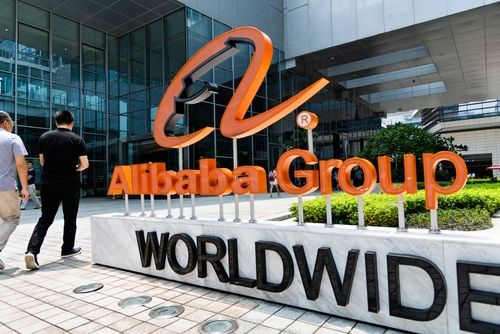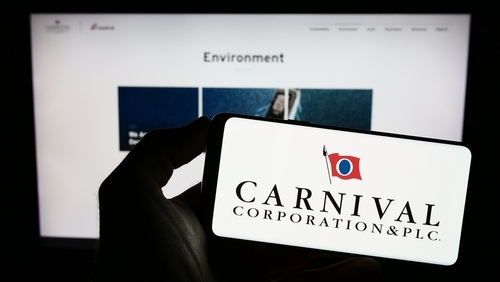Ultragenyx (RARE) Q2 Revenue Up 13%

Key Points
Revenue and earnings per share both exceeded analyst expectations for the quarter.
Net loss narrowed compared to the prior year, but cash use remains high.
Progress continued in late-stage clinical trials for key pipeline products.
Ultragenyx Pharmaceutical (NASDAQ:RARE), a rare disease drug developer, reported its second quarter 2025 earnings on August 5, 2025. Both revenue and earnings per share exceeded Wall Street expectations for the period. Revenue reached $166.5 million, topping the analyst estimate of $162.0 million, while net loss per share at $(1.17) was smaller than the expected $(1.30). The quarter showed solid commercial growth across the company’s product range, ongoing improvements in loss figures, and continued investment in its clinical pipeline. Overall, the period demonstrated strong top-line momentum, with total revenue up 13.2% year over year, but also highlighted continued reliance on pipeline advances and persistent net losses.
| Metric | Q2 2025 | Q2 2025 Estimate | Q2 2024 | Y/Y Change |
|---|---|---|---|---|
| EPS (GAAP) | $(1.17) | $(1.30) | $(1.52) | 23.0 % |
| Revenue (GAAP) | $166.5 million | $162.0 million | $147.0 million | 13.2 % |
| Crysvita Revenue | $120.4 million | $113.7 million | 6.0 % | |
| Dojolvi Revenue | $23.2 million | $19.4 million | 19.8 % | |
| Net Loss | $(115.0 million) | $(131.6 million) | 12.7 % |
Source: Analyst estimates provided by FactSet. Management expectations based on management's guidance, as provided in Q1 2025 earnings report.
Business overview and focus areas
Ultragenyx Pharmaceutical develops and commercializes therapies for rare and ultra-rare genetic diseases. Its focus on these conditions allows it to target patient groups with few treatment options, where competition tends to be lower. The company’s business model centers on in-licensing promising product candidates, building a global commercial presence, and maintaining a diverse clinical pipeline. Its products address a range of rare genetic disorders, with approved therapies and gene therapies for both children and adults.
Recently, Ultragenyx has concentrated on expanding its reach for commercial products, advancing multiple late-stage clinical trials, and keeping costs in check as it works toward a profitability target in 2027. Key success factors include effective commercialization of approved drugs, strong execution on clinical milestones, regulatory approvals, and careful management of spending and cash use. Intellectual property and ongoing investment in new product candidates are also important for its long-term position in the biopharmaceutical sector.
Second quarter highlights and performance drivers
Key commercial products delivered notable growth during the quarter. Crysvita, a biologic therapy for X-linked hypophosphatemia and related conditions, generated $120.4 million in revenue, up 6.0% from the prior year. Direct product sales in Latin America and Türkiye declined to $34.7 million, while royalty revenue from the United States and Canada increased to $79.1 million. Management pointed to successful reimbursement negotiations in Latin America as a positive factor, though some regional volatility remains possible.
Dojolvi, a small molecule therapy for long-chain fatty acid oxidation disorders, recorded $23.2 million in revenue, a 19.8% increase year over year. The company attributed this to steady new patient growth and consistent demand in both the United States and the EMEA (Europe, Middle East, Africa) regions. New patient forms and broader prescriber adoption supported this trend.
Evkeeza and Mepsevii, biologic therapies for ultra-rare lipid and lysosomal storage diseases, contributed $14.6 million and $8.3 million in revenue, respectively. Evkeeza nearly doubled its contribution from the prior year, driven by new launches outside the United States. Management noted Evkeeza’s expanding international presence as a key source of revenue diversification going forward.
Total operating expenses grew 4.2% to $274.4 million, considerably slower than revenue growth. Research and development expenses were $164.7 million as the company continued investing in late-stage trials and regulatory filings. Net loss improved to $(115.0) million, down 12.7% from the previous year, reflecting higher revenue and expense control. The cash position at quarter-end was $539 million, after net operating cash use of $108 million and $80 million raised through an At-The-Market facility.
On the pipeline front, Ultragenyx made progress for setrusumab, a monoclonal antibody for osteogenesis imperfecta (brittle bone disease), and GTX-102, an antisense oligonucleotide therapy for Angelman syndrome. Setrusumab’s Phase 3 trials are on track for final data analysis around year-end 2025 following a favorable interim safety review, according to company statements referencing the Orbit and Cosmic studies. GTX-102 received Breakthrough Therapy Designation from the U.S. Food and Drug Administration in June 2025, with full enrollment of its Phase 3 global study ahead of schedule.
The gene therapy pipeline also advanced, though with some setbacks. UX111, for Sanfilippo syndrome A, received a Complete Response Letter from the FDA in July 2025, citing manufacturing and controls issues but no clinical concerns. The company plans to address the feedback and resubmit, anticipating up to a six-month review. DTX401, a gene therapy for glycogen storage disease, remains on track for a regulatory filing in the fourth quarter of 2025, and enrollment continues on the pivotal UX701 study for Wilson disease.
Looking ahead: Financial outlook and priorities
Management reaffirmed full-year 2025 revenue guidance of $640 million to $670 million, with expected revenue growth of 14% to 20% compared to 2024. Specific product guidance indicated anticipated Crysvita revenue of $460 million to $480 million for 2025, and Dojolvi revenue is expected to be between $90 million and $100 million in fiscal 2025.
The leadership team reiterated its goal to reach profitability in 2027 and suggested that net cash used in operations for 2025 would “modestly increase” compared to 2024. Investors should continue monitoring late-stage clinical milestones, regulatory reviews, cash utilization, and commercialization ramp-up for products like setrusumab and GTX-102, as these remain key drivers of long-term performance for the company. RARE does not currently pay a dividend.
Revenue and net income are presented using U.S. generally accepted accounting principles (GAAP) unless otherwise noted.
Where to invest $1,000 right now
When our analyst team has a stock tip, it can pay to listen. After all, Stock Advisor’s total average return is 1,026%* — a market-crushing outperformance compared to 180% for the S&P 500.
They just revealed what they believe are the 10 best stocks for investors to buy right now, available when you join Stock Advisor.
*Stock Advisor returns as of August 4, 2025
JesterAI is a Foolish AI, based on a variety of Large Language Models (LLMs) and proprietary Motley Fool systems. All articles published by JesterAI are reviewed by our editorial team, and The Motley Fool takes ultimate responsibility for the content of this article. JesterAI cannot own stocks and so it has no positions in any stocks mentioned. The Motley Fool has no position in any of the stocks mentioned. The Motley Fool has a disclosure policy.







